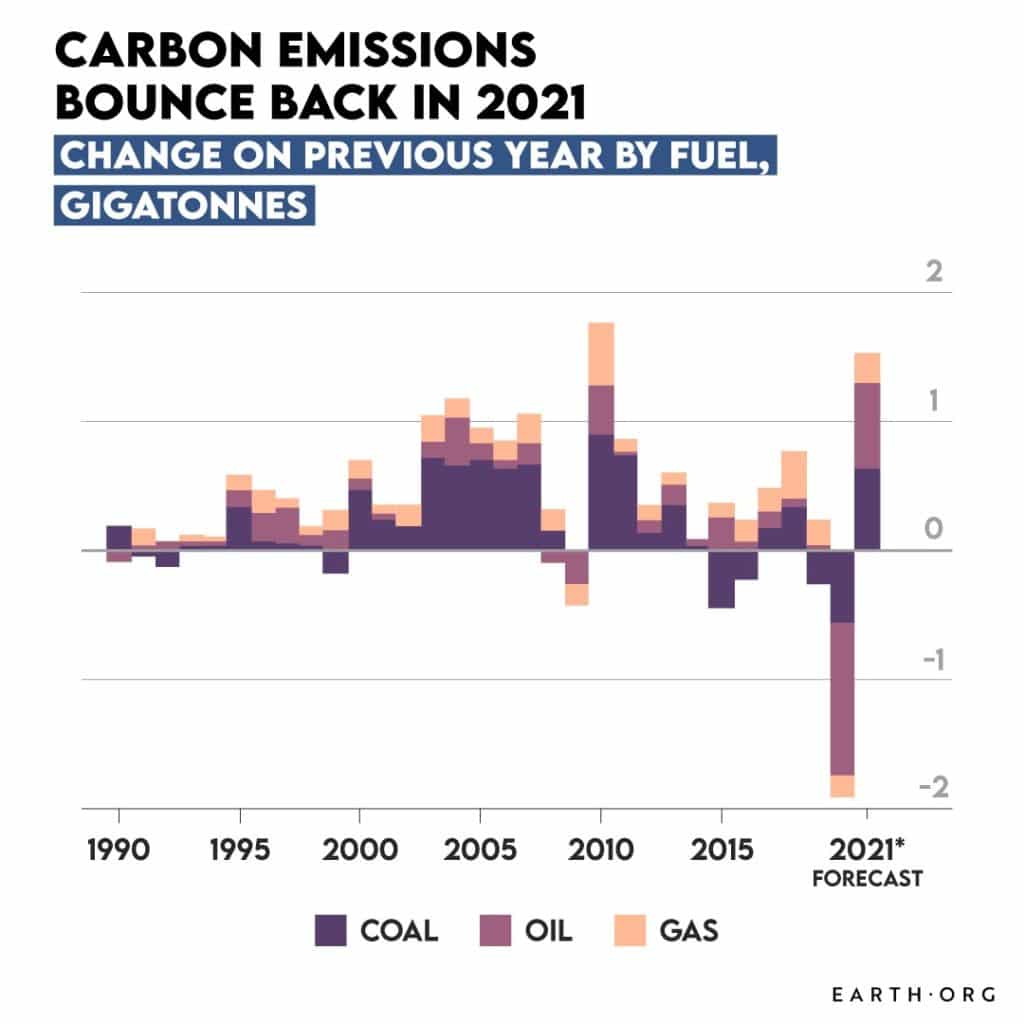While a disaster, the COVID-19 pandemic massively reduced energy demand, and thus global emissions. Some hoped we could use this chance to turn over a new leaf and steer our society into a more sustainable course; unfortunately the IEA’s expects global emissions to bounce back in 2021.
Earth.Org takes a closer look.
—
The COVID-19 Pandemic was the single most disruptive event to affect human society since World War II. Nonetheless, amid lockdowns, proliferating infections and deaths, all were quick to notice the sudden drop in pollution as activity grinded to halt. It seemed that the pandemic’s silver lining was a huge decline in our greenhouse gas emissions, at a time when wildfires, sea level rise and ice melt all began hitting record rates.
Global carbon emissions dropped by 6.4% in 2020, thanks to reduced demand for energy from all sources. Interestingly, we need to make similar cuts each year for the next decade if we are to remain under 1.5°C global warming.

Any hope that COVID-19’s disruption would help us adjust course and emerge with a more sustainable global profile was dashed by the IEA’s latest energy review. As global economic activity surpasses 2019 levels in early 2021, global energy-related emissions are expected to increase by 5%, bringing within arm’s reach of pre-crisis levels.

The oil industry, which saw its biggest annual decline ever in 2020, is expected to produce emissions surpassing those of coal in 2021, though this would still only recover the demand lost in 2020. This partial recovery is quite simply due to the pandemic not being over, and restrictions still in place on transportation, making for a sluggish aviation rebound.
Coal use is projected to come back with a vengeance in 2021, surpassing 2019 levels by 0.4% and falling just short of the 2014 global peak. The Chinese coal power fleet represents one third of global consumption and its energy demand is rising rapidly. Its usage of all fossil fuels is expected to grow with coal contributing 70% of the increase. Painting a nuanced picture, China is both exemplary in its renewable infrastructure development, and reprimandable for its 7% increase in coal output between 2019 and 2020.
India is set to show similar behaviour, while US coal consumption will remain 5.6% below 2019 levels while natural gas and renewables continue to carve out more space for themselves.
The pandemic success story in the energy sector is renewables; these continued their growth through 2020 thanks to a 7% growth in electricity generation from renewable sources. Recent long-term contracts and priority access to the grid overcame lower electricity demand, supply chain challenges and construction delays. The IEA predicts record growth rates in 2021, with half the global increase coming from China, followed by the US, the EU and India. Wind leads the charge, as policy deadlines in China and the US drove developers to make a record amount of installations in the 4th quarter of 2020.
On conclusion, it seems that 2020 will hardly put a dent in the past two decades’ global emissions trend. However, it gave renewables a chance to carve out a little more space in energy generation, hopefully accelerating its race to the top. It remains a shame that we could not capitalize more on this crisis to reform our energy source profile as a global community, but it is also too optimistic to think that this could be figured out in a year with so much turmoil.
This article was written by Owen Mulhern.
You might also like: Shifting Baselines and the Elusiveness of Climate Change










![The Statistics of Biodiversity Loss [2020 WWF Report]](https://u4d2z7k9.rocketcdn.me/wp-content/uploads/2020/12/lprwinkyTHB-544x306.jpg)





